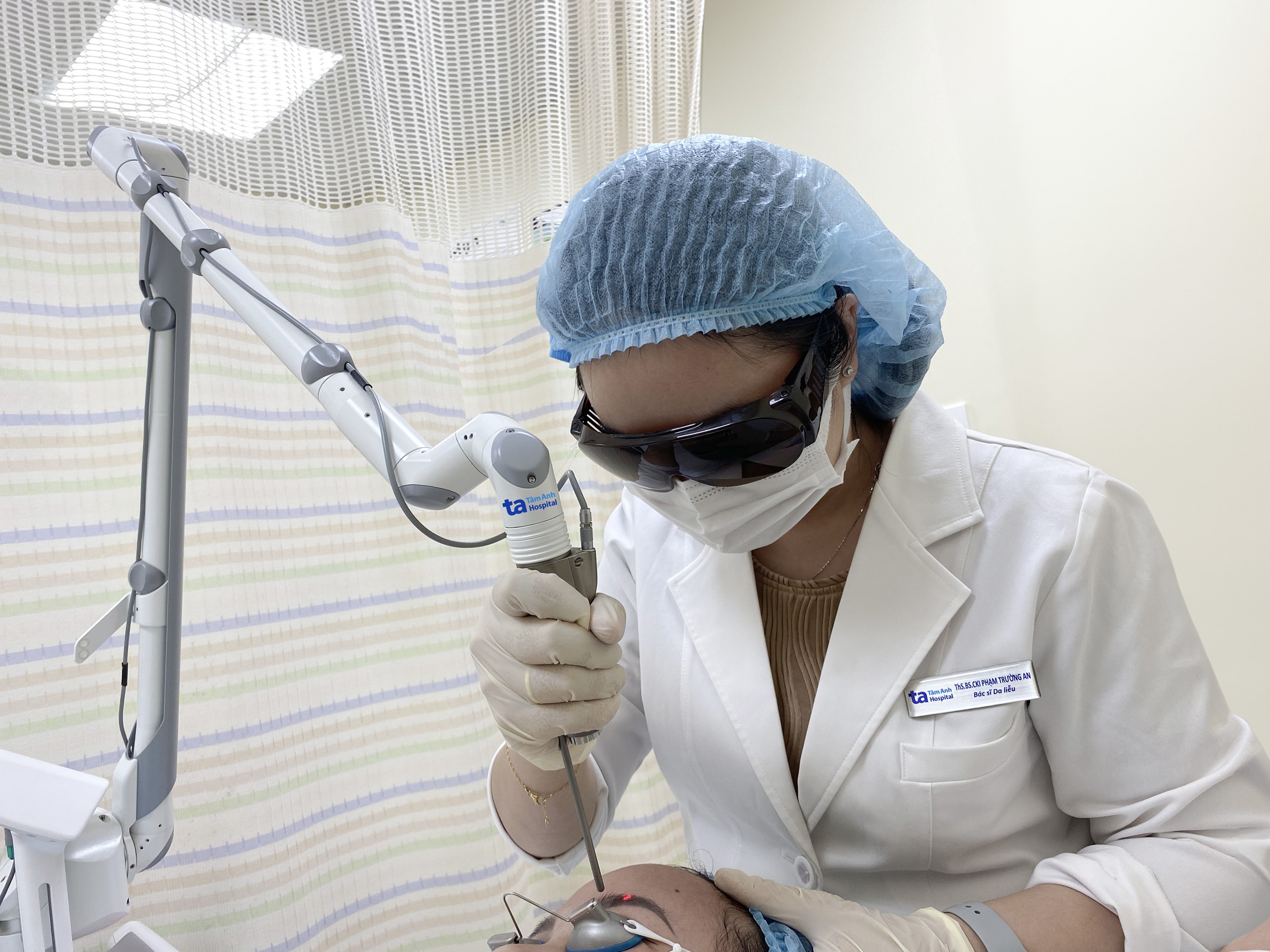Answer:
Eyebrows turning blue, gray, or blue-gray after microblading is quite common, especially for those who have previously used traditional black or blue-black ink. This phenomenon can be caused by one or more factors, the most common of which are the type of ink, the microblading technique, and individual skin type.
The type of ink used in the microblading process significantly determines color fastness and pigment stability. If low-quality inks with high carbon black and blue pigment content are used, over time, under the influence of sunlight, ultraviolet (UV) rays, and the body's oxidation process, warm-toned pigments like red and yellow tend to decompose, leaving behind cool tones like blue or gray.
 |
Doctor An uses pico laser to remove eyebrow tattoos. Illustrative photo: Tam Anh General Clinic, District 7. *Italicized* |
The ink application technique also plays a significant role in causing eyebrows to turn blue or gray. Injecting the ink too deep into the dermis layer of the skin, instead of just the superficial layer (epidermis), causes the ink to remain under the skin and not shed naturally. Light penetrating this skin layer can cause the ink color to change, creating a blue or red hue depending on the original ink color.
Individual skin type also affects the color after microblading. The immune response and pigment breakdown process vary from person to person, leading to different results even with the same technique and ink.
If the discoloration is significant or difficult to cover, you should visit reputable medical facilities with a dermatology and cosmetic dermatology department for examination and assessment by a doctor. Avoid attempting to tattoo over the existing color or seeking treatment at unreliable establishments. Incorrect over-tattooing can result in uneven eyebrows, making future corrections difficult, and may even cause scarring or hyperpigmentation.
Currently, tattoo removal can be achieved using advanced laser technologies such as Q-Switched laser and pico laser. These technologies can break down blue-gray pigments without damaging surrounding tissues, providing high ink removal efficiency with minimal scarring, making them suitable for cases like yours.
MSc. MD. CKI Pham Truong An
Department of Dermatology - Cosmetic Dermatology
Tam Anh General Clinic, District 7
| Readers can submit questions about cosmetic dermatology here for doctor's answers. |












